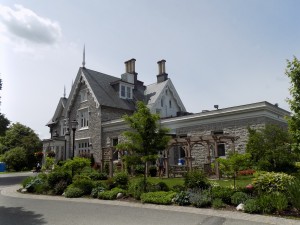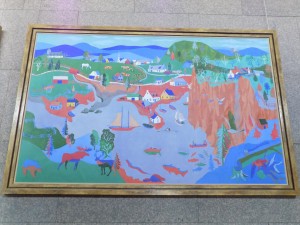Doors Open Ottawa pulls back the curtain on the seldom seen
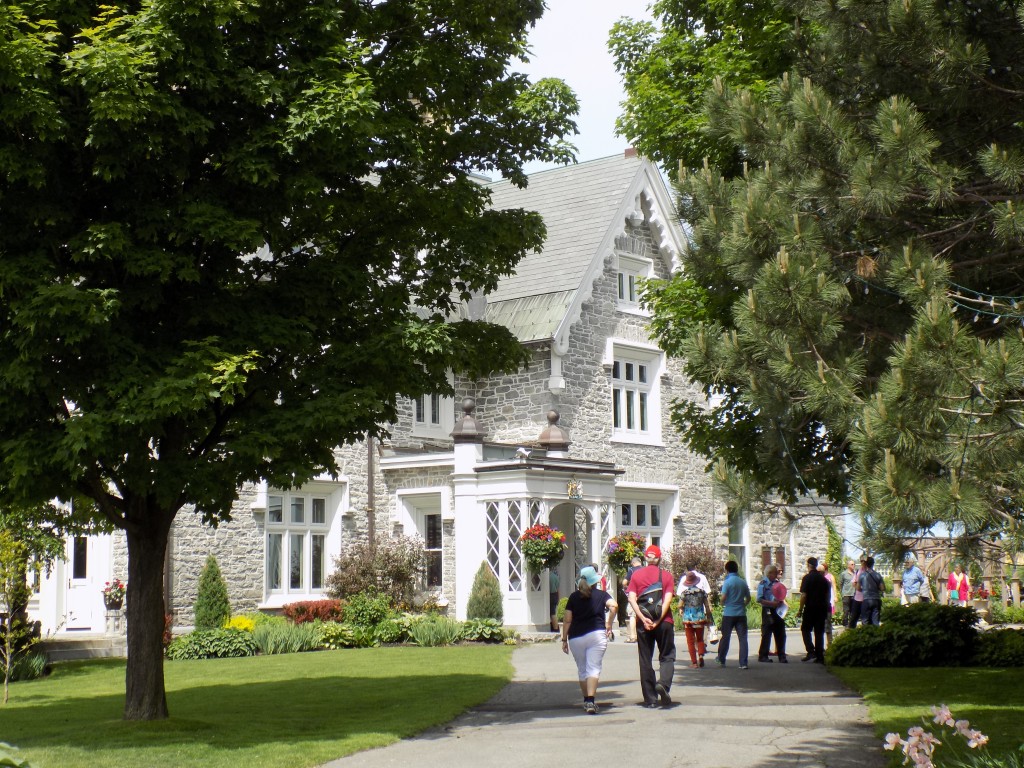
Earnscliffe on Sussex Drive in Ottawa is home to the British High Commissioner. It was also the home of Sir John A. Macdonald, Canada’s first Prime Minister. Photo by James Morgan
Unique places, both public and private, were open for exploration on June 4 and 5 for Doors Open Ottawa, an annual event where some of the city’s more intriguing structures are open for the public to explore. There were over 130 places on the list this year, ranging from old churches and lodge halls in small villages, to embassies and headquarters of federal government departments in the city core. The idea behind Doors Open is to allow the public to have free access to places they normally cannot easily go to, and places that are often less understood or noticed by most people.
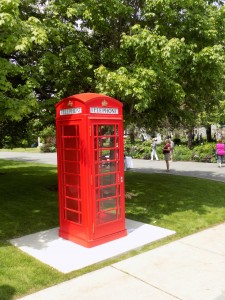
London calling: This historic British telephone booth is by the lane at Earnscliffe. There is no telephone inside. Photo by James Morgan
The United States Embassy and the Embassy of France are the two most notable diplomatic destinations for Doors Open. However, they require advance registration and tickets disappear almost as fast as tickets for major music or sports events. However, the Earnscliffe estate was open. It’s the residence of the British High Commissioner to Canada—that’s what ambassadors are called in countries that are part of the British Commonwealth. The estate was built in 1855 by businessman Thomas McKay, but in 1882 became the home of Sir John A. Macdonald. He had been Canada’s first Prime Minister from 1867 to 1873 but returned to office in 1878 and served until his death—in his bedroom at Earnscliffe, in 1891. The Harriss family purchased the estate from Agnes Macdonald, the former Prime Minister’s widow in 1900 and then sold it to the British government in 1930. Today Earnscliffe is home to High Commissioner Howard Drake.
Photos were not allowed indoors at Earnscliffe, but the indoor tour was remarkably extensive. Photos of the Drake family are displayed throughout, really giving the feeling to visitors that they were in someone else’s house. The only difference was that next to some of the family photos, there were also portraits of various members of the British Royal Family. Most of us cannot claim Prince Charles and Camilla or Prince Harry among our relatives. Adjacent to the Sir John A. Macdonald bedroom is the Thatcher Suite, named after former British Prime Minister Margaret Thatcher who stayed there during a visit to Ottawa in the 1980s. The main floor includes the library which was originally Macdonald’s office. Successive High Commissioners have left their influence on the shelves. There are joke books and board games next to works of political history, proving that diplomats have a human and humorous side. There’s also a formal drawing room (that’s a living room to us common folks), dining room, and the River Room which gives a scenic cliff-top view of the Ottawa River. Earnscliffe has been fully renovated during the past three years after a damaging fire in 2013.
Across Sussex Drive from Earnscliffe, the Lester B. Pearson building, headquarters of the Department of Global Affairs (Canada’s equal to the U.S. State Department) had exhibits on the first floor explaining Canada’s foreign affairs activities. Staff explained how the department oversees the process of negotiating international treaties, and how it responds to emergencies in other countries by sending officials to help Canadian citizens affected by natural disasters and civil unrest. The public also got to see the two paintings by Quebec artist Alfred Pellan that hang above the reception desk in the lobby. The former Stephen Harper government, known for its adoration of the monarchy, had them removed and replaced with a large portrait of Queen Elizabeth II. The Trudeau government had them returned to their former place. Ironically, the two paintings had originally been hanging in the lobby since 1973 when Queen Elizabeth II officially opened the building.
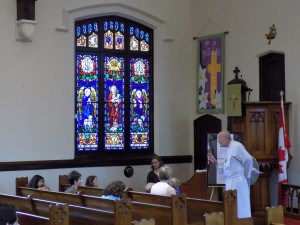
Rev. Dr. Bryan King, Pastor of St. Luke Lutheran Church, preaching the Children’s sermon on Doors Open Sunday. The stained glass Good Shepherd Window honors Rev. Alfred Dashner, one of the church’s longest serving pastors. Photo by James Morgan
Just a couple of blocks away from Global Affairs, St. Luke Lutheran Church on MacKay Street opened up its doors for the second year. In a city where historic Anglican (Episcopal), Roman Catholic, and United (a 1925 merger of Methodists, some Congregationalists, and some Presbyterians), churches are most common, St. Luke is a reminder that there is German heritage in Ottawa too, although today’s congregation is quite diverse ethnically. The church was built in 1915 and once ran its own elementary school and also has a large Casavant pipe organ.
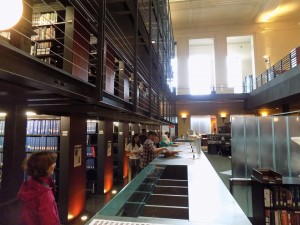
Inside the Library of Parliament’s location in the former Bank of Nova Scotia building. Photo by James Morgan
Among the downtown buildings in Doors Open was the former Bank of Nova Scotia building on Sparks Street. It was built in 1925 and served as a bank until 1985 when the branch moved to a more modern (and less attractive) structure across the street. In 2001, the Library of Parliament (Canada’s equal to the Library of Congress in Washington D.C.) renovated the building and now uses it for its reference collection.
The large number of buildings that are part of Doors Open Ottawa make it impossible to see all of them in two days. It’s a great way though to get a better understanding of, and appreciation for, the places that are part of how Canada’s capital city lives and works.





